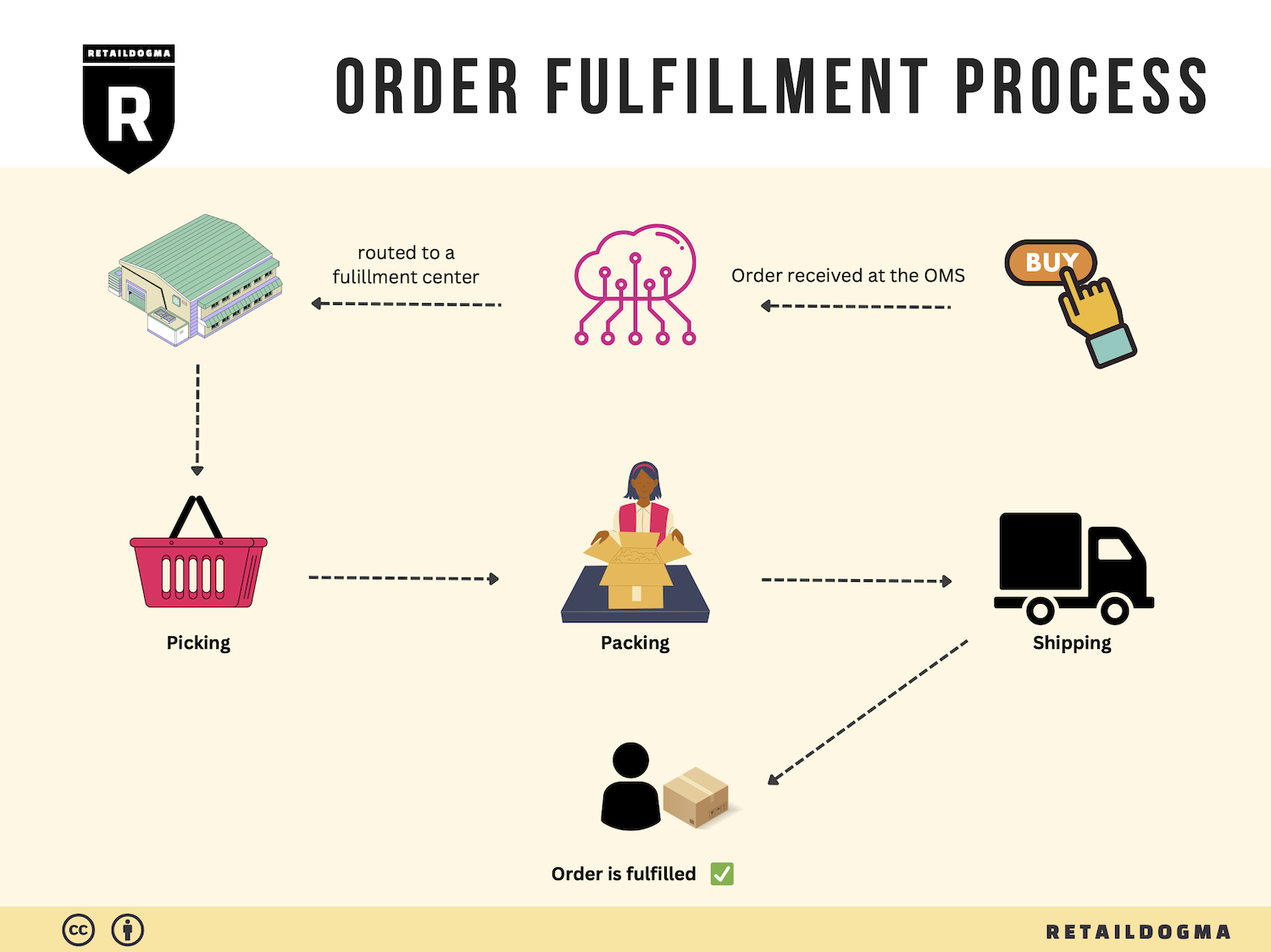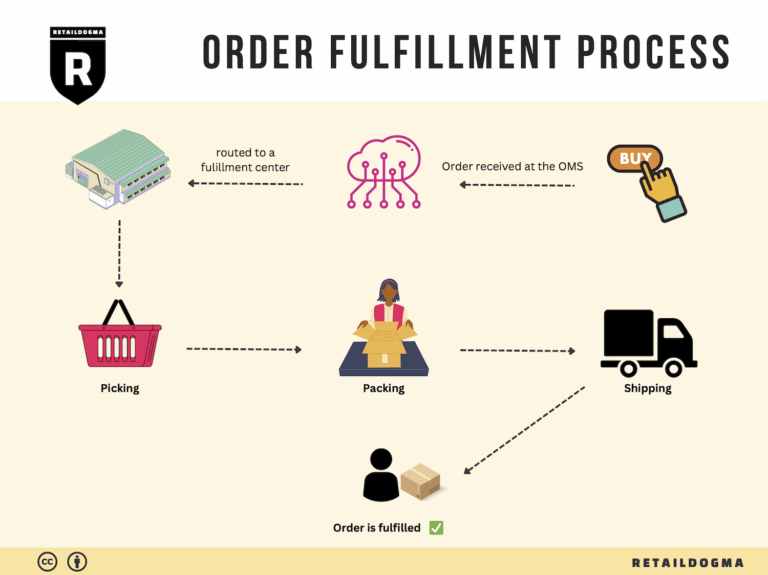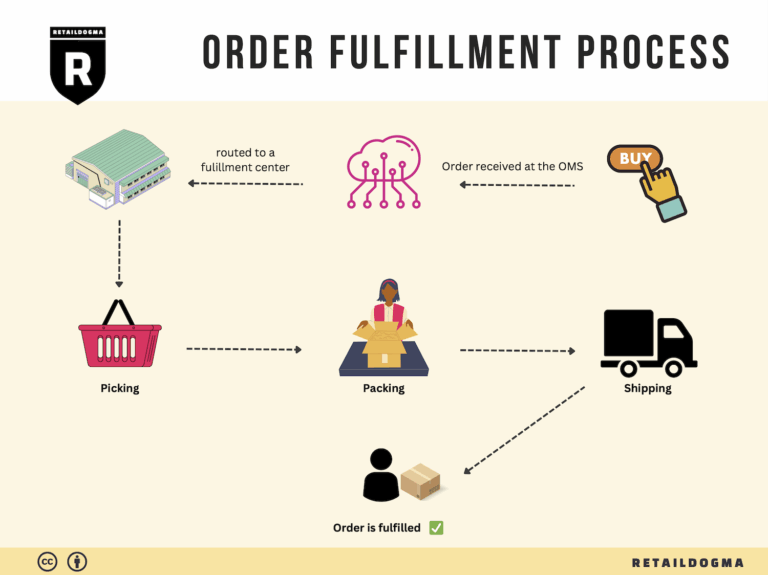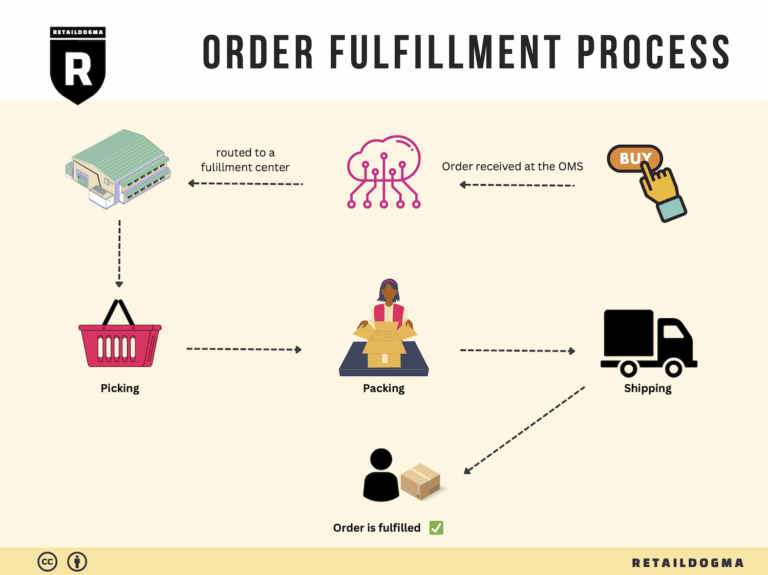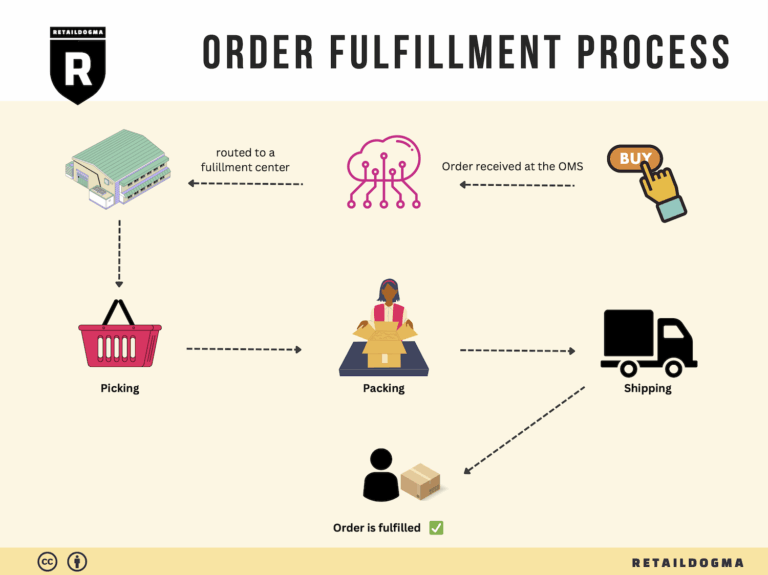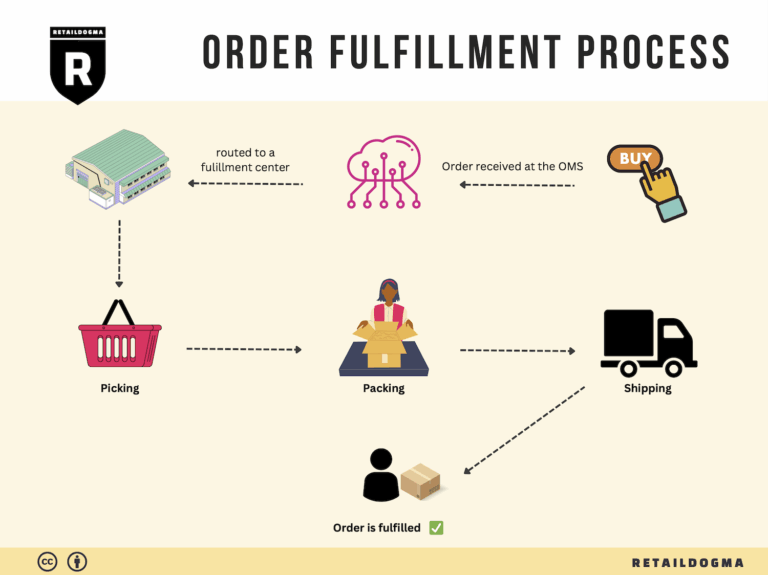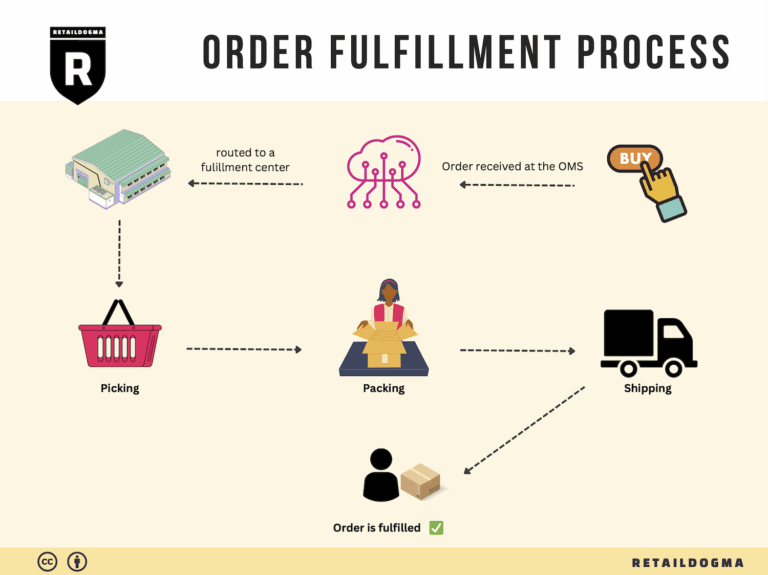Ecommerce Fulfillment Services: The Ultimate Guide (2025)
What is E-commerce Fulfillment? An Introduction for Growing Businesses
Understanding E-commerce Fulfillment: A Key to Scaling Your Business
As a growing e-commerce business owner, you may find yourself grappling with the complexities of packing and shipping orders. The excitement of increasing sales can quickly turn into a daunting challenge when faced with logistics. This is where e-commerce fulfillment comes into play, serving as a crucial backbone for your operations. Simply put, fulfillment is the process of getting a product from your warehouse to your customer’s doorstep.
Fulfillment encompasses various activities, including inventory management, order processing, picking and packing items, shipping, and handling returns. For many businesses, especially those experiencing rapid growth, managing these tasks in-house can become overwhelming. This guide aims to provide clarity on the different fulfillment models available, helping you navigate the options that best suit your business needs.
In this guide, you will learn about various fulfillment models, such as Third-Party Logistics (3PL) and Fulfillment by Amazon (FBA). Each model offers distinct advantages and can significantly impact your operational efficiency. We will also explore the core services these providers typically offer, including storage solutions, order tracking, and customer service support.
Choosing the right fulfillment partner is a pivotal decision for your business. Factors such as location, technology integration, and scalability should be carefully evaluated to ensure alignment with your long-term goals. This guide will equip you with practical tips to assess potential partners, focusing on aspects like their track record, customer reviews, and pricing structures.
Understanding the costs associated with fulfillment is equally vital. We will break down the pricing models commonly used in the industry, giving you insights into how to budget effectively and avoid hidden fees.

The ultimate goal of this guide is to empower you to make informed decisions about your logistics strategy. By understanding e-commerce fulfillment, you can streamline your operations, enhance customer satisfaction, and focus on what you do best: growing your business. With the right knowledge and tools at your disposal, you can turn fulfillment from a pain point into a competitive advantage.
What You’ll Learn In This Guide
- What is E-commerce Fulfillment? An Introduction for Growing Businesses
- The Order Fulfillment Process: From ‘Buy’ Button to Customer’s Door
- Comparing Fulfillment Models: In-House vs. 3PL vs. Dropshipping
- A Deep Dive into Amazon FBA: Pros, Cons, and Who It’s For
- Core Services Offered by Fulfillment Centers
- How to Choose a Fulfillment Partner: A 6-Point Checklist
- Understanding Fulfillment Pricing: A Breakdown of Common Fees
- Frequently Asked Questions (FAQs) about Fulfillment
- Conclusion: Is Outsourcing Fulfillment the Right Move for Your Business?
- Important Disclaimer
The Order Fulfillment Process: From ‘Buy’ Button to Customer’s Door
1. Receiving Inventory
The first step in the order fulfillment process is receiving inventory. This involves accepting shipments from suppliers and ensuring that the products match the purchase orders in terms of quantity and quality. Upon arrival, items are checked for damages and discrepancies, and each product is logged into the inventory management system using a unique identifier, typically a Stock Keeping Unit (SKU).
Importance: Proper receiving of inventory is crucial as it sets the foundation for all subsequent steps in the fulfillment process. Any errors at this stage can cascade through the system, leading to stockouts, excess inventory, or customer dissatisfaction.
Key Term: SKU (Stock Keeping Unit) – A unique identifier for each distinct product, allowing for accurate tracking and management of inventory.
2. Warehouse Storage
Once inventory is received, the next step is warehouse storage. This involves placing the products in designated storage locations within the warehouse, which may include shelves, bins, or pallets. Efficient storage practices utilize space effectively and help ensure that products are easily accessible when needed.
Importance: Effective warehouse storage minimizes the time it takes to locate and retrieve items, which is essential for maintaining fast order fulfillment. Proper organization also aids in inventory management, reducing the likelihood of errors such as overstocking or stockouts.
Key Term: Location Code – A code or identifier that specifies where a product is stored within the warehouse, facilitating quick retrieval.
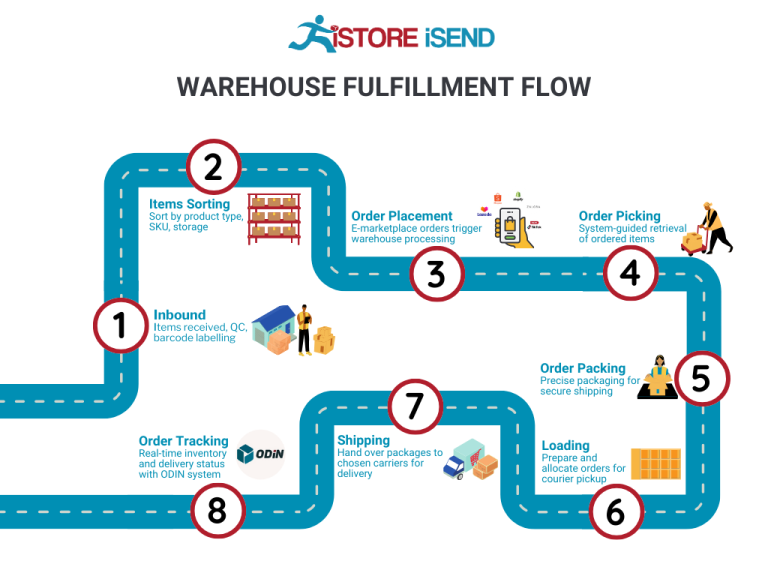
3. Order Picking
Order picking is the process of selecting items from their storage locations to fulfill customer orders. This can be done manually or with the assistance of technology such as pick-to-light systems or mobile scanning devices. Workers use pick lists, which detail the items and quantities needed for each order, to ensure accuracy.
Importance: This step is critical as it directly impacts order accuracy and fulfillment speed. Efficient picking methods can significantly reduce the time taken to prepare orders, thus enhancing customer satisfaction and operational efficiency.
Key Term: Pick List – A document or digital list that guides warehouse workers in selecting the correct items for an order, including quantities and storage locations.
4. Order Packing
After items have been picked, the next step is order packing. This involves carefully placing the items into boxes or containers, ensuring they are secure and protected during transit. Packing materials, such as bubble wrap, packing peanuts, or custom inserts, may be used to safeguard fragile items. Each package is then labeled with shipping information and barcodes for tracking.
Importance: Proper packing is essential to prevent damage during shipping and to ensure that customers receive their orders as expected. It also plays a role in branding; well-packaged items can enhance the customer experience and encourage repeat purchases.
Key Term: Packing Slip – A document included with the package that lists the items contained within, serving as a confirmation for both the sender and recipient.
5. Shipping & Delivery
The final step in the order fulfillment process is shipping and delivery. Once the package is packed, it is handed off to a shipping carrier, such as UPS, FedEx, or USPS. The carrier transports the package to the customer’s address, and tracking information is often provided to allow customers to monitor the delivery status.
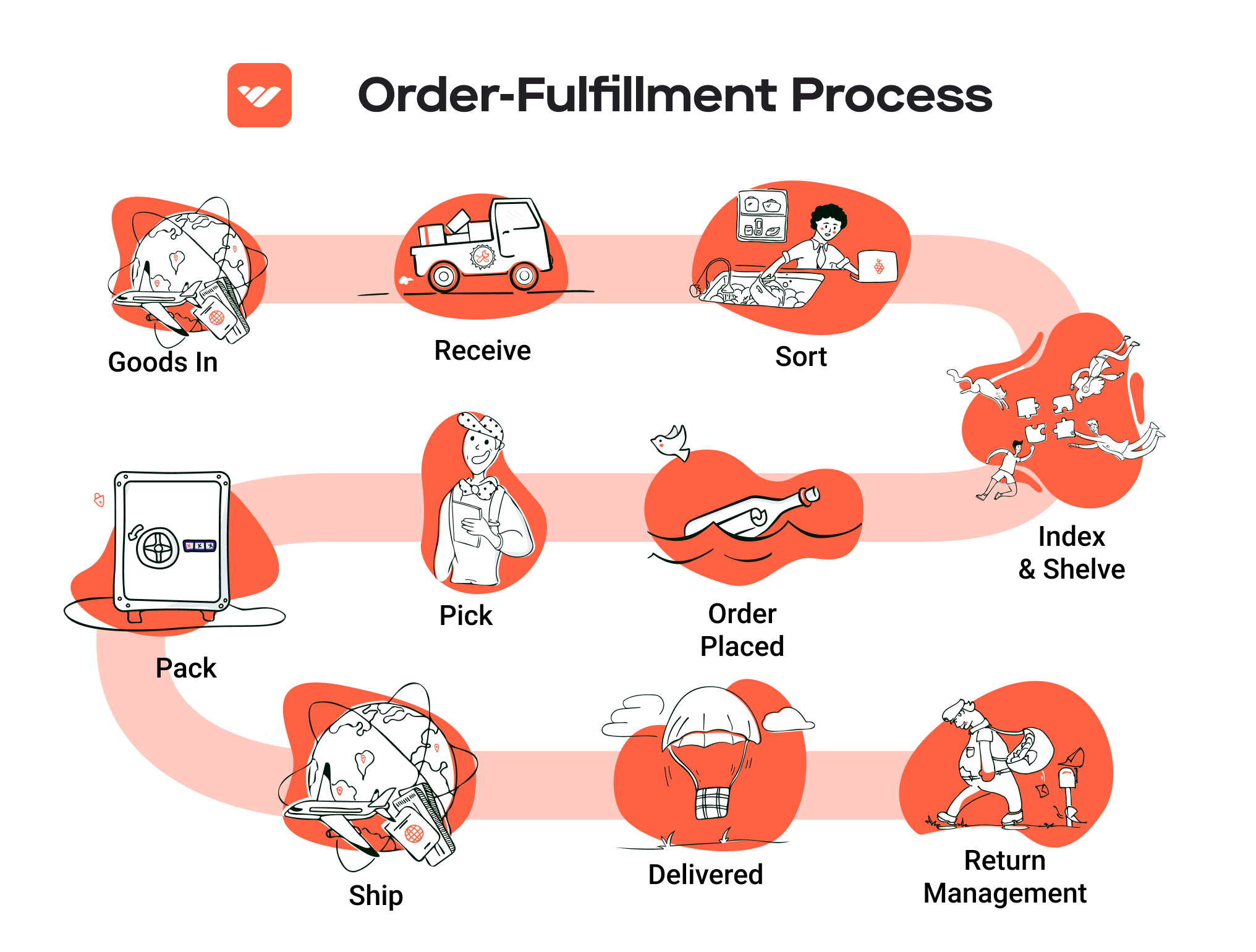
Importance: Timely shipping and delivery are critical for customer satisfaction. Delays or issues at this stage can lead to frustration and negatively affect the brand’s reputation. Effective shipping strategies can also reduce costs and improve overall operational efficiency.
Key Term: Last Mile Delivery – The final step of the delivery process, where the package is transported from a distribution center to the final delivery destination, which is often the most complex and costly segment of the shipping process.
By understanding and optimizing each of these steps, e-commerce businesses can enhance their order fulfillment processes, leading to improved customer satisfaction, operational efficiency, and ultimately, increased sales.
Comparing Fulfillment Models: In-House vs. 3PL vs. Dropshipping
Fulfillment Model Comparison
| Model | Who Handles Inventory | Best For (Business Stage) | Key Advantage | Key Disadvantage |
|---|---|---|---|---|
| In-House Fulfillment | Business owns and manages inventory | Established businesses with stable demand | Full control over inventory and fulfillment processes | Higher upfront costs and operational complexity |
| Third-Party Logistics (3PL) | 3PL provider manages inventory | Growing businesses seeking scalability | Reduced operational burden and increased efficiency | Less control over inventory and potential service variability |
| Dropshipping | Supplier ships directly to customer | Startups and businesses testing new products | Low overhead costs and no inventory risk | Lower profit margins and reliance on supplier reliability |
In-House Fulfillment
In-house fulfillment involves managing inventory and logistics operations internally. This model is best suited for established businesses that have stable demand and the resources to invest in warehouse space, staff, and technology. One of the key advantages of in-house fulfillment is the full control it provides over the inventory and the entire fulfillment process. Businesses can tailor their operations to meet specific customer needs and ensure quality control at every stage of the process. However, this model also comes with significant challenges, including higher upfront costs for warehousing and equipment, as well as the operational complexity of managing staffing, shipping, and inventory management. For businesses planning to scale, in-house fulfillment can become increasingly burdensome without the right systems and processes in place.
Third-Party Logistics (3PL)
Third-party logistics (3PL) is a model where businesses outsource their logistics and fulfillment operations to specialized providers. This model is particularly advantageous for growing businesses looking to scale their operations without the added burden of managing logistics in-house. A major benefit of utilizing a 3PL is the reduced operational burden, allowing businesses to focus on core competencies such as marketing and product development. 3PL providers typically offer advanced technology and expertise in logistics, which can lead to increased efficiency and improved shipping times. However, a significant disadvantage is the reduced control over inventory and fulfillment processes. Businesses must also be wary of potential service variability, as not all 3PL providers deliver the same level of service or reliability. Therefore, careful selection of a 3PL partner is crucial for maintaining customer satisfaction.
Dropshipping
Dropshipping is a fulfillment model where the retailer does not keep the products in stock but instead transfers customer orders directly to a manufacturer or wholesaler, who then ships the products directly to the customer. This model is ideal for startups and businesses testing new products, as it requires minimal upfront investment and eliminates the risk of holding unsold inventory. The primary advantage of dropshipping is the low overhead costs associated with not having to manage inventory or warehouse space. However, it also presents challenges, including lower profit margins due to reliance on suppliers and potential issues with fulfillment speed and product quality. Additionally, businesses using dropshipping must depend heavily on their suppliers’ reliability, which can affect customer satisfaction and brand reputation. For entrepreneurs looking to enter the market with minimal risk, dropshipping can be a viable option, but it requires a robust strategy to manage supplier relationships and customer expectations effectively.
Conclusion
Choosing the right fulfillment model is crucial for e-commerce businesses aiming to scale. Each model—In-house, 3PL, and Dropshipping—offers unique advantages and disadvantages that must be carefully considered in the context of the business’s goals, resources, and operational capabilities. By understanding these models, business owners can make informed decisions that align with their long-term strategies and customer satisfaction objectives.
A Deep Dive into Amazon FBA: Pros, Cons, and Who It’s For
Understanding Fulfillment by Amazon (FBA)
Fulfillment by Amazon (FBA) is a logistics service provided by Amazon that allows sellers to store their products in Amazon’s fulfillment centers. Amazon takes care of storage, packaging, and shipping, as well as customer service and returns. This service is particularly appealing to e-commerce businesses looking to scale their operations without the overhead of managing their own fulfillment processes.
How FBA Works
-
Product Listing: Sellers create product listings on Amazon and opt into the FBA program. They prepare their products according to Amazon’s guidelines, which include packaging and labeling requirements.
-
Shipping to Amazon: Sellers ship their products to Amazon’s fulfillment centers. Amazon provides specific instructions on how to ship products to their warehouses, including which fulfillment center to send products to based on the seller’s inventory.
-
Storage: Once received, products are stored in Amazon’s warehouses. Sellers can monitor their inventory levels through the Seller Central dashboard.
-
Order Fulfillment: When a customer places an order for a product, Amazon handles the entire fulfillment process. This includes picking, packing, and shipping the product directly to the customer.
-
Customer Service: Amazon also manages customer service inquiries and returns for FBA products. This is a significant advantage for sellers, as it allows them to focus on other aspects of their business.
-
Payment: Sellers receive payments from Amazon based on their sales minus FBA fees. These fees can vary based on the size and weight of the product, as well as the time of year.
Pros of Using FBA
-
Prime Eligibility: Products fulfilled through FBA are eligible for Amazon Prime. This can significantly boost sales, as millions of Prime members prefer products that can be shipped quickly and for free.
-
Customer Trust: Amazon is a trusted brand, and customers often feel more secure purchasing products that are fulfilled by Amazon. This can lead to higher conversion rates and repeat purchases.
-
Multi-Channel Fulfillment: FBA allows sellers to fulfill orders from multiple sales channels, not just Amazon. This means that if a seller sells on their own website or other marketplaces, they can still use Amazon’s fulfillment services.
-
Scalability: FBA allows businesses to scale quickly. Sellers can leverage Amazon’s vast infrastructure without the need for significant capital investment in warehousing and logistics.
-
Time-Saving: By outsourcing fulfillment to Amazon, sellers can focus on other critical aspects of their business, such as product development, marketing, and customer engagement.
Cons of Using FBA
-
High Fees: FBA comes with various fees, including storage fees, fulfillment fees, and additional charges for long-term storage. These costs can add up, especially for slow-moving inventory.
-
Strict Inventory Rules: Amazon has strict guidelines regarding inventory management. Sellers must maintain adequate stock levels and monitor their inventory closely to avoid stockouts or excess storage fees.
-
Commingling Risks: Amazon may commingle inventory from different sellers, which can lead to issues if a product is returned or if there are quality concerns. This risk can affect brand reputation, especially for private label sellers.
-
Limited Control: When using FBA, sellers have limited control over the fulfillment process. If there are issues with shipping or customer service, sellers may find it challenging to resolve them quickly.
-
Complexity in Returns: While Amazon handles returns, the process can be complex for sellers, especially if customers return items that are damaged or not in the original condition.
Who is FBA Best For?
Fulfillment by Amazon is best suited for:
-
Small to Medium-Sized Businesses: Companies that may not have the resources or infrastructure to manage their own logistics can benefit significantly from FBA.
-
Sellers with High Sales Volume: Businesses that expect high sales volumes can take advantage of Amazon’s vast distribution network to ensure timely deliveries and customer satisfaction.
-
Brands Looking to Scale: If a brand aims to expand its reach quickly, FBA can provide the necessary logistics support to facilitate growth without the burden of managing fulfillment.
-
New Sellers: Those new to e-commerce can benefit from FBA’s built-in customer trust and brand recognition, making it easier to gain traction in a competitive marketplace.
-
Businesses with Seasonal Products: Companies that sell seasonal items can utilize FBA to manage inventory without the need for permanent warehousing solutions.
In conclusion, while Fulfillment by Amazon offers numerous advantages that can simplify the logistics of e-commerce, it is crucial for sellers to weigh these benefits against the potential drawbacks. Understanding the intricacies of FBA and assessing its alignment with specific business goals will enable e-commerce entrepreneurs to make informed decisions about whether to leverage this powerful fulfillment solution.
Core Services Offered by Fulfillment Centers
Inventory Management & Warehousing
Inventory management is the backbone of any successful e-commerce operation. Fulfillment centers provide sophisticated warehousing solutions that enable businesses to efficiently manage their stock levels. This includes real-time tracking of inventory, automated reorder points, and detailed reporting on stock movements.
The benefit of effective inventory management is twofold. Firstly, it minimizes the risk of overstocking or stockouts, which can lead to lost sales and increased holding costs. By leveraging advanced inventory management systems, businesses can ensure that they have the right products available at the right time. Secondly, it enhances operational efficiency by streamlining the warehousing process, reducing the time and labor required to locate and retrieve products. This not only improves order fulfillment speeds but also enhances customer satisfaction, as timely deliveries are crucial in e-commerce.
Pick and Pack Services
Pick and pack services are essential for any e-commerce business looking to fulfill customer orders quickly and accurately. This service involves selecting items from the warehouse (picking) and preparing them for shipment (packing). Fulfillment centers utilize advanced technology, such as barcode scanning and automated picking systems, to ensure that the right products are picked in the correct quantities.
The primary benefit of pick and pack services is the efficiency they bring to order fulfillment. With a dedicated team focused on these tasks, businesses can significantly reduce the time it takes to process orders. Additionally, accurate picking and packing reduce the likelihood of errors, which can lead to costly returns and dissatisfied customers. By outsourcing this function to a fulfillment center, e-commerce businesses can focus on their core operations, such as marketing and product development, while leaving the logistics to the experts.
Kitting and Assembly
Kitting and assembly is a specialized service offered by many fulfillment centers that allows businesses to bundle multiple products into a single package. This can be particularly useful for companies that sell product sets or promotional items. For example, a business might offer a skincare kit that includes a cleanser, toner, and moisturizer, all packaged together for sale.
The benefit of kitting and assembly lies in its ability to enhance product offerings and streamline the fulfillment process. By pre-packaging items, businesses can reduce the time spent on individual order processing and improve inventory accuracy. Furthermore, kitting can lead to increased sales, as bundled products often appeal to customers looking for convenience or value. This service can also help businesses differentiate themselves in a competitive market by offering unique product combinations that enhance the customer experience.
Returns Management (Reverse Logistics)
Returns management, also known as reverse logistics, is a critical service that many fulfillment centers provide. This process involves handling customer returns efficiently and effectively, including receiving returned items, inspecting them, restocking, or disposing of them as necessary.
The importance of effective returns management cannot be overstated. For e-commerce businesses, managing returns is crucial for maintaining customer satisfaction and loyalty. A seamless returns process can enhance the customer experience, making it more likely that customers will shop with the business again. Additionally, efficient returns management can help businesses recoup lost revenue by quickly restocking returned items and making them available for resale.
Moreover, fulfillment centers often have systems in place to analyze return data, which can provide valuable insights into customer behavior and product performance. This information can help businesses make informed decisions about product offerings, inventory management, and marketing strategies.
Conclusion
Fulfillment centers offer a suite of core services that are essential for e-commerce businesses looking to scale their operations effectively. From inventory management and warehousing to pick and pack services, kitting and assembly, and returns management, these services not only streamline logistics but also enhance the overall customer experience. By partnering with a fulfillment center, businesses can focus on growth and innovation while ensuring that their operational needs are met with efficiency and accuracy.
How to Choose a Fulfillment Partner: A 6-Point Checklist
Location & Warehouse Network
Choosing a fulfillment partner begins with understanding their geographical reach and warehouse locations. The proximity of the fulfillment center to your customer base can significantly impact shipping costs and delivery times.
Why It’s Important:
– Reduced shipping times can enhance customer satisfaction and repeat business.
– Lower shipping costs can improve your profit margins.
Questions to Ask:
1. Where are your fulfillment centers located, and how do those locations align with my primary customer demographics?
2. What are your average shipping times to key regions?
3. Do you have a strategy for optimizing shipping routes and costs?
Technology & Integrations
In today’s digital landscape, the technology stack of your fulfillment partner is critical. A robust system can streamline operations, provide real-time tracking, and integrate seamlessly with your e-commerce platform.
Why It’s Important:
– Efficient technology reduces order processing times and minimizes errors.
– Integrations with existing platforms (like Shopify, WooCommerce, etc.) facilitate smoother operations.
Questions to Ask:
1. What fulfillment management software do you use, and what features does it offer?
2. Can your system integrate with my current e-commerce platform?
3. How do you handle inventory management and order tracking?
Specializations (e.g., Cold Storage, Oversized Items)
Not all fulfillment centers can handle every type of product. If your business has specific needs—like cold storage for perishables or space for oversized items—it’s essential to find a partner that specializes in those areas.
Why It’s Important:
– Specialized fulfillment centers can handle your products more efficiently, ensuring they are stored and shipped correctly.
– This can reduce damage and spoilage, protecting your bottom line.
Questions to Ask:
1. What types of products do you specialize in handling?
2. Do you have temperature-controlled storage for perishable goods?
3. How do you manage oversized or heavy items in your warehouse?
Scalability & Capacity
As your business grows, your fulfillment needs will change. A good fulfillment partner should be able to scale with you, whether that means handling seasonal spikes in demand or supporting new product lines.
Why It’s Important:
– Scalability ensures that you can meet customer demand without delays or increased costs.
– A partner with the capacity to grow alongside your business can save you the hassle of switching providers.
Questions to Ask:
1. How do you handle fluctuations in order volume, especially during peak seasons?
2. What is your current capacity, and how quickly can you scale operations if needed?
3. Can you accommodate additional services, such as kitting or custom packaging, as my business evolves?
Pricing and Contracts
Understanding the pricing structure of your fulfillment partner is crucial to maintaining profitability. Look for transparency in pricing and be wary of hidden fees that could erode your margins.
Why It’s Important:
– Clear pricing helps you budget effectively and avoid unexpected costs.
– A flexible contract can provide peace of mind if your needs change unexpectedly.
Questions to Ask:
1. What is your pricing structure, and what factors influence costs (e.g., storage, order volume, shipping)?
2. Are there any hidden fees or charges I should be aware of?
3. What are the terms of the contract, and is there flexibility for renegotiation?
Customer Support & Reviews
Finally, the quality of customer support offered by your fulfillment partner can significantly impact your operations. Responsive and knowledgeable support can resolve issues quickly and help you navigate challenges as they arise.
Why It’s Important:
– Strong customer support ensures that you can address problems promptly, minimizing disruptions to your business.
– Positive reviews from other clients can provide insight into the partner’s reliability and service quality.
Questions to Ask:
1. What kind of customer support do you offer (e.g., dedicated account manager, 24/7 support)?
2. How do you handle service disruptions or issues with order fulfillment?
3. Can you provide references or case studies from other clients in my industry?
Conclusion
Choosing the right fulfillment partner is a critical decision that can affect your e-commerce business’s efficiency and customer satisfaction. By using this checklist, you can make an informed choice that aligns with your operational needs and growth ambitions. Remember, taking the time to evaluate potential partners thoroughly will pay off in the long run, ensuring a smooth and successful fulfillment process for your business.
Understanding Fulfillment Pricing: A Breakdown of Common Fees
Initial Setup Fees
Initial setup fees are typically charged by fulfillment centers when you first begin using their services. This fee can cover a variety of costs, including account setup, software integration, and training for your staff on how to use their systems. The amount can vary significantly based on the complexity of your operations and the specific services you require. For example, if you need custom software integrations or extensive training, you might face higher initial fees.
To calculate the initial setup fee, fulfillment centers often consider factors such as:
- Complexity of integration: More complex systems that require significant customization will incur higher fees.
- Volume of products: A larger product catalog may require more extensive setup processes.
- Training needs: If extensive training is needed for your team to adapt to the new system, this could increase costs.
Receiving Fees
Receiving fees are charged for the process of unloading, inspecting, and entering your products into the fulfillment center’s inventory system. This fee is typically assessed per pallet or per box and can vary depending on the volume and type of products being received.
Factors that influence receiving fees include:
- Volume: Higher volumes of inventory may lead to lower per-unit receiving fees due to economies of scale.
- Product type: Bulky or fragile items may require additional handling, increasing the cost.
- Labor costs: The local labor market can impact these fees, as fulfillment centers must pay their staff for the time spent on receiving.
Storage Fees (per pallet/bin)
Storage fees are charged for the space your products occupy in the fulfillment center. These fees are typically calculated on a per-pallet or per-bin basis and can be charged monthly. The rate may vary depending on the type of items being stored and the duration of storage.
Key considerations for storage fees include:
- Size of items: Larger items may take up more space and incur higher fees.
- Duration: Longer storage periods can lead to increased costs, especially if the items are not moving quickly.
- Seasonality: During peak seasons, like holidays, storage fees may increase due to higher demand for space.
Pick & Pack Fees (per item/order)
Pick and pack fees are charged for the labor involved in picking items from inventory and packing them for shipment. This fee is usually calculated on a per-item or per-order basis. The complexity of the order can also affect the fee; for example, orders with multiple items or custom packaging may incur higher charges.
When calculating pick and pack fees, consider the following:
- Order size: Larger orders with more items may have a higher total fee but a lower per-item cost.
- Special handling: Orders that require special packaging or handling, such as fragile items, will typically incur additional costs.
- Automation: Fulfillment centers that use advanced technology may offer lower pick and pack fees due to increased efficiency.
Shipping Fees
Shipping fees are one of the most significant costs associated with fulfillment and can vary widely based on several factors, including the shipping method, destination, and package weight. Fulfillment centers often negotiate shipping rates with carriers, which can impact your overall shipping costs.
Key factors that influence shipping fees include:
- Distance: Shipping to far-off locations typically incurs higher costs.
- Weight and dimensions: Heavier or larger packages will generally cost more to ship.
- Shipping speed: Expedited shipping options will come with a premium price.
Tips for Getting an Accurate Quote
-
Be Transparent: Provide detailed information about your products, order volume, and expected shipping frequency to receive a more accurate quote.
-
Ask About Discounts: Inquire whether the fulfillment center offers discounts for higher volumes or long-term contracts.
-
Compare Multiple Providers: Don’t settle for the first quote. Compare several fulfillment centers to understand the market rate and find the best fit for your business.
-
Consider Hidden Fees: Ensure you ask about any additional fees that may not be included in the initial quote, such as return processing or extra handling charges.
-
Review Contracts Carefully: Before signing, review all terms and conditions to ensure you understand the fee structure completely.
By understanding these various fulfillment pricing models and asking the right questions, you can make informed decisions that support your e-commerce business’s growth and efficiency.
Frequently Asked Questions (FAQs) about Fulfillment
1. What is the reason for Kohl’s Ohio fulfillment center closure?
Kohl’s is closing its e-commerce fulfillment center in Monroe, Ohio, as part of a strategic shift to enhance operational efficiency. The company has decided to leverage newer fulfillment technologies and utilize its retail stores for order fulfillment, which allows them to maintain service levels without the Monroe facility.
2. How many employees will be affected by the closure?
The closure will impact approximately 768 employees at the Monroe fulfillment center. The majority of affected workers are in material handling positions, but other roles such as supervisors and maintenance technicians will also be impacted.
3. When is the last operational day for the fulfillment center?
The Monroe fulfillment center is scheduled to cease all operations on October 31, 2025. However, the last day for workers at the facility will be September 12, 2025, with some employees possibly remaining for administrative tasks until the closure is finalized.
4. What will happen to the employees affected by the closure?
Kohl’s has offered affected employees a competitive severance package and the option to apply for other open positions within the company. This support is part of their commitment to assist associates during the transition.
5. How does the closure of this fulfillment center impact Kohl’s supply chain?
The closure is a part of Kohl’s broader strategy to streamline its supply chain. By closing older fulfillment centers and increasing reliance on retail locations and newer distribution centers, Kohl’s aims to improve cost efficiency and enhance the overall customer experience.
6. What’s the difference between a warehouse and a fulfillment center?
A warehouse primarily focuses on storing goods, whereas a fulfillment center is designed to pick, pack, and ship orders directly to customers. Fulfillment centers often include advanced technology for inventory management and order processing to enhance speed and efficiency in order delivery.
7. What is a 3PL (Third-Party Logistics)?
A 3PL is a service provider that manages logistics operations for businesses, including transportation, warehousing, and fulfillment services. Companies often partner with 3PLs to optimize their supply chain, reduce costs, and improve delivery times without managing these operations in-house.
8. How much do fulfillment services cost?
Fulfillment service costs can vary widely based on factors such as order volume, storage space, and service level agreements. Typically, businesses can expect to pay for storage space, order processing fees, shipping costs, and any additional services like kitting or returns management. It’s advisable to get quotes from multiple providers to assess which fits your business needs best.
9. What alternatives do businesses have following the closure of Kohl’s Ohio fulfillment center?
Businesses can explore several alternatives, including utilizing other fulfillment centers within Kohl’s network, partnering with third-party logistics providers (3PLs), or leveraging their own retail locations for fulfillment. Each option has its pros and cons, and the best choice will depend on specific operational needs and customer demands.
10. How can businesses prepare for potential disruptions in their fulfillment operations?
To mitigate disruptions, businesses should assess their current fulfillment strategies, diversify their fulfillment partners, and invest in technology that enhances inventory visibility and order management. Additionally, developing contingency plans and maintaining open communication with fulfillment partners can help ensure smooth operations during transitions or closures.
Conclusion: Is Outsourcing Fulfillment the Right Move for Your Business?
Evaluating the Benefits of Outsourcing Fulfillment
Outsourcing fulfillment can be a transformative decision for e-commerce businesses, especially in light of recent industry shifts, such as Kohl’s closure of its Monroe, Ohio fulfillment center. By leveraging third-party fulfillment services, businesses can save valuable time and resources. This allows owners and managers to focus on core activities such as product development, marketing, and customer engagement, rather than the complexities of logistics.
One of the primary advantages of using a fulfillment service is scalability. As your business grows, so too do your operational demands. A fulfillment partner can easily adapt to fluctuating order volumes, enabling you to respond to market changes without the need to invest in additional infrastructure or workforce. This flexibility is particularly critical during peak seasons, ensuring that customer expectations are met without sacrificing quality or speed.
Moreover, fulfillment services bring a wealth of expertise and technology that many businesses may lack in-house. These partners often utilize advanced systems for inventory management, order processing, and shipping, resulting in more efficient operations. This expertise not only enhances customer satisfaction but also can lead to cost savings that are passed down to your bottom line.
However, the success of outsourcing fulfillment hinges on selecting the right partner. It’s vital to choose a fulfillment provider that aligns with your business goals and understands your specific needs. A thorough vetting process that includes assessing their technology, service levels, and scalability options is essential.
Call to Action
As you contemplate the future of your fulfillment strategy, consider conducting a comprehensive audit of your current shipping and logistics processes. Are they optimized for growth? Are they meeting customer expectations? This introspection will help you determine if partnering with a fulfillment service is the right next step for your business. By making informed choices today, you position your business for success tomorrow.
Important Disclaimer
⚠️ Important Disclaimer
The information in this guide is for educational purposes. Fulfillment services, pricing, and platform features change frequently. Always conduct your own due diligence and consult with providers directly before making business decisions.
